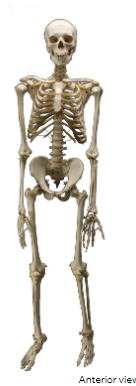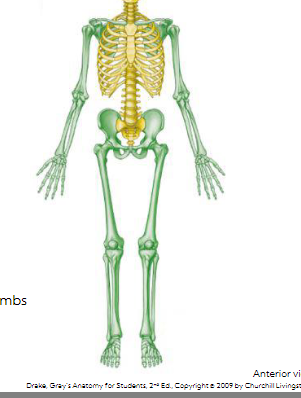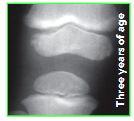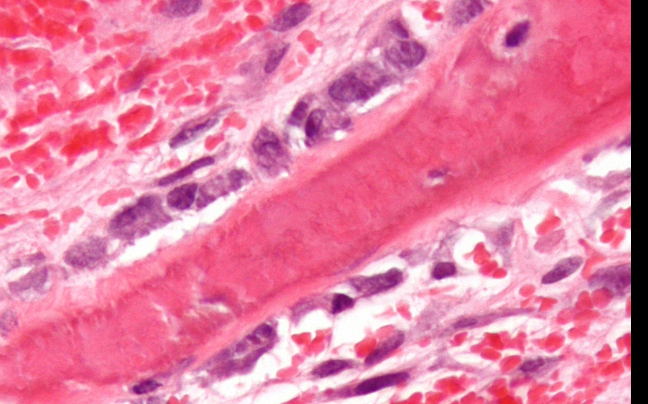Skeletal System and Bone Development
1/19
Earn XP
Description and Tags
Flashcards covering key concepts related to the skeletal system, bone development, and anatomy.
Name | Mastery | Learn | Test | Matching | Spaced |
|---|
No study sessions yet.
20 Terms

Skeletal System
The organ system that comprises bones, cartilage, ligaments, and tendons, responsible for support, protection, movement, and blood cell production.

Axial Skeleton
The part of the skeletal system that consists of the skull, vertebral column, ribs, and sternum.

Appendicular Skeleton
The part of the skeletal system that includes the pectoral girdle, pelvic girdle, and the bones of the upper and lower limbs.
Bone Development
The process through which bones form and mature, beginning in utero and continuing until approximately age 20.

Epiphyseal Plates
Growth plates found at the ends of long bones that allow for elongation during bone development.
Osteoblasts
Cells responsible for bone formation.

Osteoclasts
Cells responsible for bone resorption.
Types of Fractures
Different classifications of bone fractures, such as compression, spiral, and greenstick fractures.
Synovial Joint
A type of joint characterized by a fluid-filled joint cavity that allows for a wide range of motion.
Flexion
Movement that decreases the angle between two body parts.
Extension
Movement that increases the angle between two body parts.
Abduction
Movement away from the midline of the body.
Adduction
Movement toward the midline of the body.
Vertebrae
The individual bones that make up the vertebral column.
Cranial Sutures
Fibrous joints that connect the bones of the skull.
Fontanels
Soft spots in the neonatal skull that allow for flexibility during birth and growth of the brain.
Viscerocranium
The facial skeleton, consisting of 14 bones including the jaw and nasal bones.
Neurocranium
The part of the skull that encases the brain, made up of 8 bones.
Costal Margin
The lower edge of the rib cage formed by the bottom ribs.
Thoracic Cage
The bony structure that encircles the thoracic cavity, protecting organs like the heart and lungs.